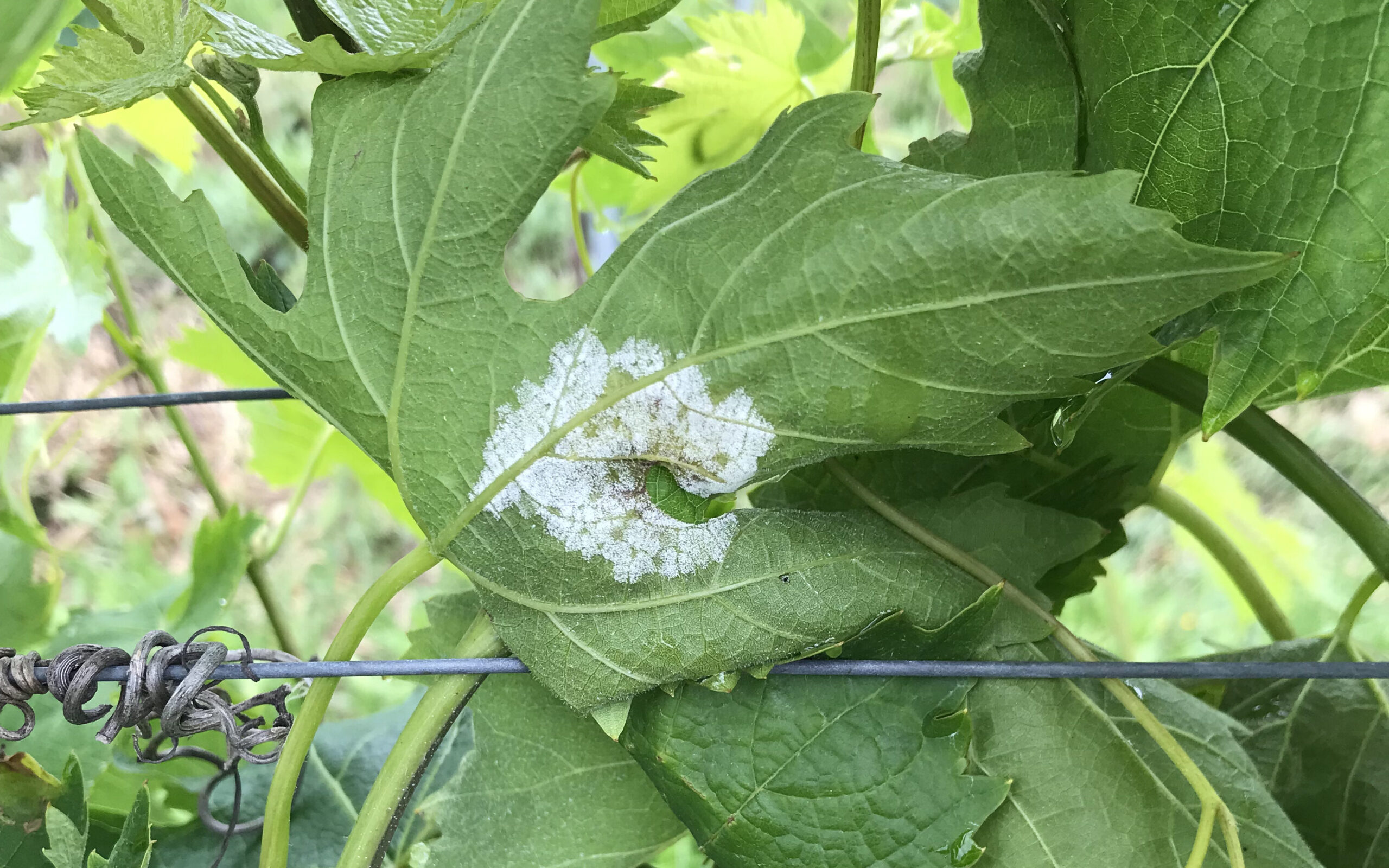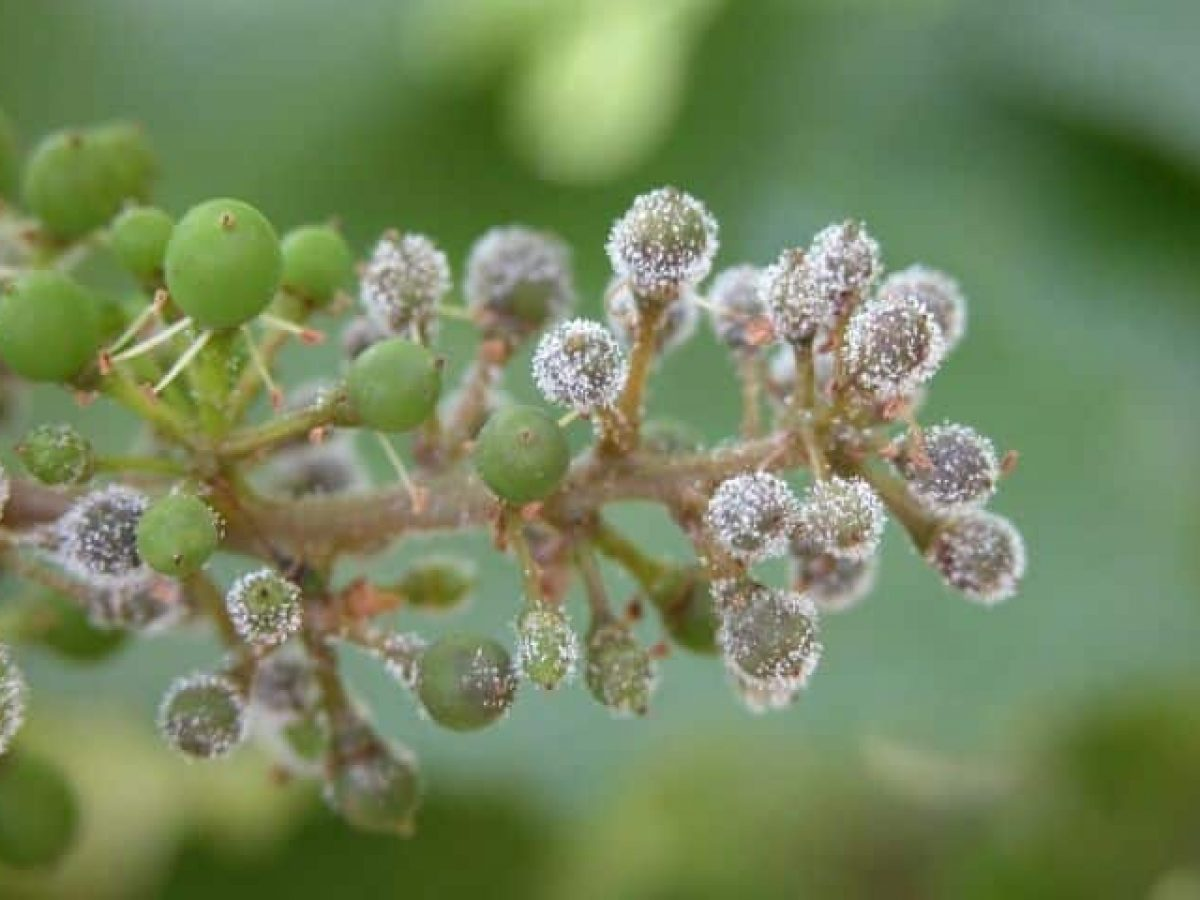In addition to the most known and feared diseases of the vine such as the Peronospora of the vine and theOidium, the vineyard is subject to other possible external attacks, namely insects.
In this article we will analyse the main parasites that infest the vines, going to observe:
- their general characteristics;
- the symptoms presented by the vines that attack the vines;
- the methods available to date to combat them.
Table of Contents
- Cicaline of the vine
- Moth of the vine
- Popillia of the vine
- Scarab of the vine
- Vine moth
- Remedies and prevention: the Role of Technology
Cicaline of the vine
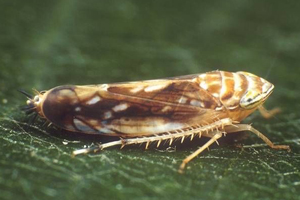
Vine cicaline specimen
Vine cicaline is a small insect (1/8 inch long) harmless to humans that can cause damage to the lives in two ways: feeding on lymph and transmitting a disease called phylloxera.
A female cicaline can lay up to 800 eggs in a single day. The eggs hatch in nymphs that are very similar to the adult and continue to feed on the plant.
Usually this insect is located on the lower side of the leaves and near the stem.
How to identify it
As a specific symptomatology of its presence we can find brownish spots on the leaves (these are left by the insect while feeding) drying, yellowing O curling of the same at the edges, or streaks along the veins; we can also find gum stains near the tips.
Consequences
As we said above, one of the most common ways in which this insect damages the vines are inserting its mouth apparatus into the plant and sucking the sap of the same and this leads to a reduction of the photosynthesis and the production fruity, but it’s not over here!
Cicaline can also damaging plants by inserting its eggs into the vegetable tissue, infecting them and taking them to the death.
Treatments
To date, several treatments for this parasite are available, such as insecticides, horticulture oils and UV radiation.
Prevention
As for prevention, it is possible by planting resistant varieties or using so-called row covers.
Moth of the vine
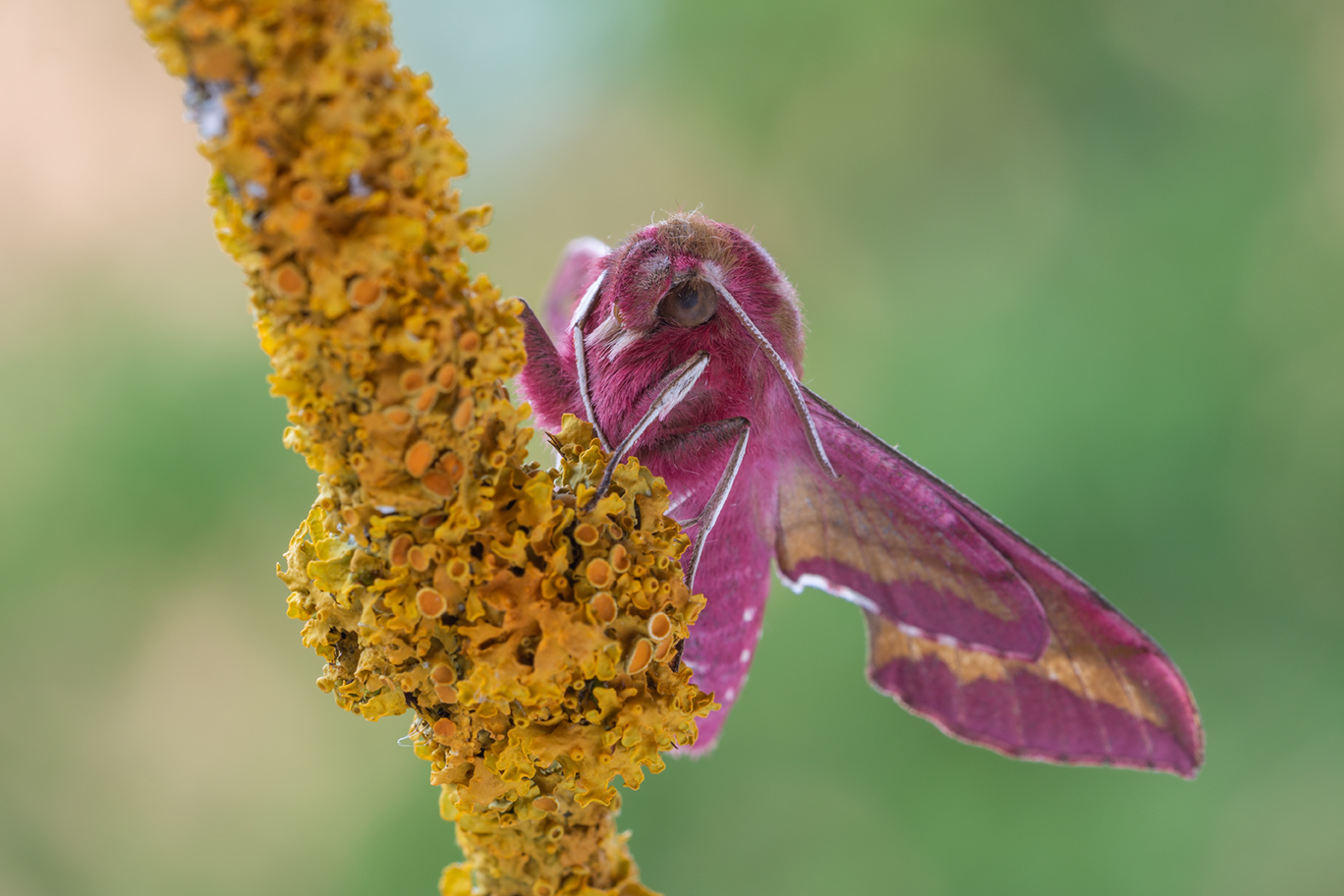
Specimen of moth “in pink” of the vine
One of the most common pests that infest the vines is the moth of the vine, which is sometimes also called the grape leaf roller.
This moth lays eggs on the lower side of the leaves or on bunches and stems of fruit.
The larvae hatch from the eggs and begin to feed on leaves, bunches of fruit or stems.
Diffusion
This insect is common throughout the United States, especially in the northeast, mates in spring, is most active from April a July. In general, when laying eggs it does not only on the leaves of grapes but also on other plants near the vine.
Speaking of the symptoms, the most commonly encountered when this insect attacks the screws is the weaving covering the leaves and clusters caused by larvae; in addition to the presence of caterpillars or larvae that feed on leaves or bunches of fruit.
Consequences
Moving on to the damage, mainly among those caused by moth of the vine we find the decreased the production of grapes and the death of the plant, depending on how many larvae there are and the severity of the infestation.
Prevention and Remedies
Finally, as regards prevention and remedies: the former include spraying of insecticides during periods when moths are most active.
The latter instead include removing infested plants, pruning the vines so that they do not touch each other, and the burning of infested plants or their remains.

It’s all about prevention.
In a few clicks you will know the weather the evolution of diseases in the your field and you can take preventive measures.
Popillia of the vine
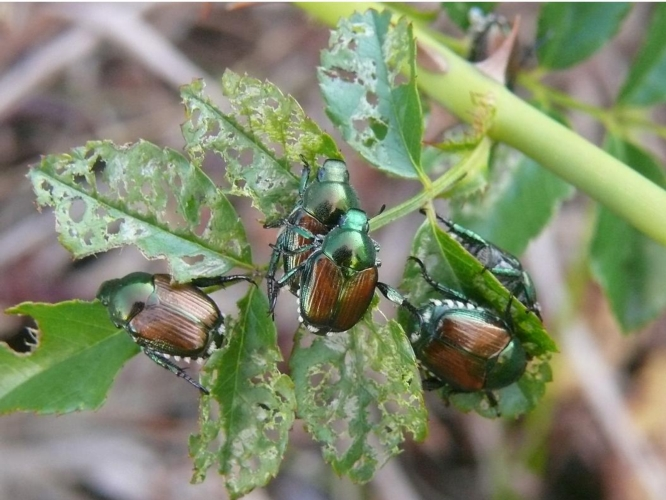
Exemplary of Popillia of the vine
The Popillia, first identified as an important parasite in 1869, it is a very common vine parasite.
The Life Cycle of Popilia
Its life cycle can be divided into four phases: egg, larva, pupa and adult.
Specifically, the female lays eggs on the lower side of the leaves, which hatch in about a week.
The eggs then hatch in larvae, which feed on the plant for up to two weeks before becoming adult.
These adults then lay more eggs on new leaves, starting the cycle over again.
How to identify it
The first signs of popillia infestation are usually found on the lower side of the leaves where brown or black stains are present.
Other symptoms may be: small yellowish-white spots on leaves and shoots (similar to aphids), irregular spots of dried leaves, sprouts browned by the feeding of larvae and brown spots on the shoots themselves.
Consequences
As for the damage in addition to damaging the vines, these insects can also spread diseases between nearby plants and trees as they move from one leaf to another in search of nourishment.
Other damages that can be found are: withering e stunted growth this can lead to an increase in production costs.
Prevention and Remedies
To stem this problem and fight this insect in the best way it is important to take preventive measures, as well as to use treatments and remedies when a real infestation occurs.
The first step to preventing the advent of this insect is keeping the area around your screws free of any organic material that could attract this insect.
Here we refer to weeds, leaves and other vegetable debris. It should also be ensured that there are no spaces between the vines where parasites can enter coming from another plant.
If you notice clear signs of infestation, such as withered or yellowed leaves, it is advisable to use a plant protection product, such as an insecticide or herbicide to combat it.
However, in recent years, there has been a greater focus on developing more methods. sustainable and less harmful to prevent these parasites from damaging the vines.
One of the most promising new methods is the use of technology and the forecast templates for predict when these pests appear in the vineyards, they can be killed before they do damage.
Scarab of the vine
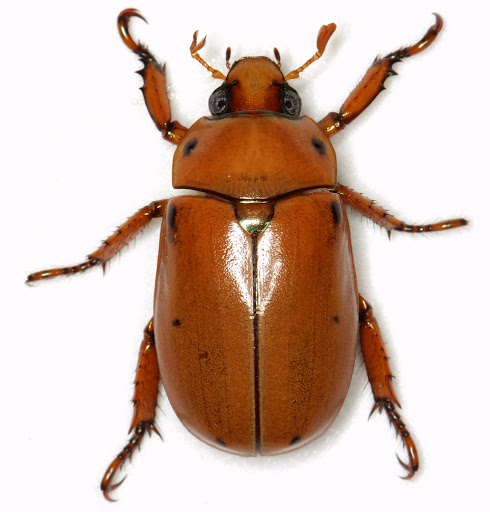
Specimen of Scrabble of the vine
The vine beetle (Pelidnota punctata) is an orange beetle widespread mainly in North America.
The life cycle
The life cycle of this insect begins with eggs laid by beetle females in the spring. These eggs hatch in about three days and produce small white larvae that feed on plant roots and other organic matter.
Once they reach maturity, these larvae are impupated for about five days before emerging as an adult.
At that point the adults lay more eggs to start the cycle again.
How to identify it
Symptoms of a vine beetle infestation are mainly withered leaves, yellowed leaves e brown screws.
Consequences
This insect can cause damage to screws by eating leaves e fruits weakening them and bringing them to death. It also has the annoying habit of entering the homes of winegrowers.
Prevention and Remedies
The most effective way to manage the diffusion of this invasive parasite is the use of insecticides or pesticides, but they are not always effective against an insect as small as the scarab of the vine.
There are also many treatments that can be used for fight this parasite, one of them is the fumigation of the soil (by injection of the soil or soaking of the soil) and the removal vines from areas haunted.
There are several ways to preventing e treat this insect:
- use protective nets O screens on plants;
- remove weeds from the vineyard;
- the use of insecticides;
- manual removal (if not too many);
- the suction of the same from under the screws with a vacuum cleaner;
In addition to the methods mentioned above, however, there are also more natural and sustainable remedies or preventive measures.
Among these we find:
- planting grape varieties resistant diseases;
- use natural predators as ladybugs or lace for insect control;
- use crops of coverage between the rows;
Vine moth
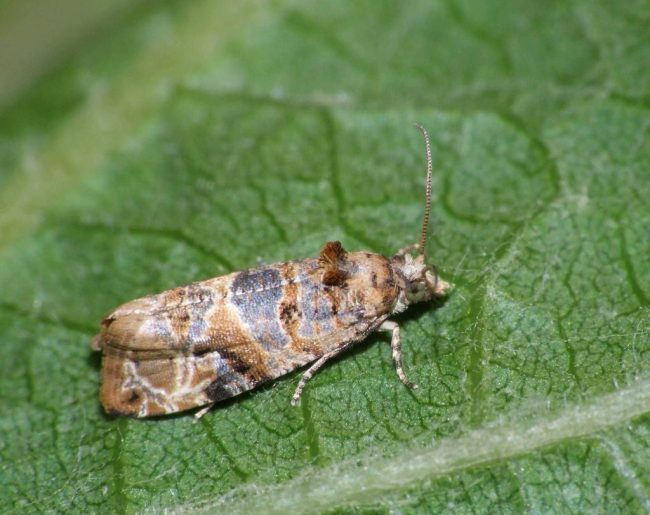
Specimen of vine moth
The foil it is a parasite that attacks the screw and can cause serious damage to the screws.
The life cycle
His life cycle start with eggs.
Once hatched, these will become larvae and then chicks.
The larvae are yellowish-white worms between 1 and 2 cm long and have a legless body with a head capsule that is dark brown in color.
In the pupae stage they have six pairs of articulated legs and a pair of antennae at the front of the head.
I chicks they are grey-brown insects, devoid of wings with chest and abdomen that each have six segments.
Finally, the foil adult is about 3 cm long, has no wings and has an oval-shaped body with short antennae at the front of the head.
It is dark brown and has yellowish stripes on its back.
How to identify it
I symptoms most common vine foil are:
- The presence of small larvae yellowish on the leaves or in the soil near the roots;
- Sprouts e leaves death or dying in the part superior of the plant;
- One sticky substance on leaves, twigs and shoots.
- Sprouts damaged brownish colored with holes where the larvae fed.
Prevention and Remedies
Finally, as regards the methods of prevention in addition to the use of plant protection products such as insecticides, pesticides and others we find:
- Avoid planting screws close to other plants haunted
- Planting varieties defendants;
- Keep the plants dry by watering in the early hours of the morning;
- Eliminate weeds around plants;
- Remove old wood from the vine;
Remedies and prevention: the Role of Technology
In this article we have seen that the main methods used to stem the problem of vine parasites are basically two:
- on the one hand we have the prevention and the use of methods natural and not invasive per plant;
- on the other hand, we have treatments with specific products such as insecticides, pesticides and different varieties of plant protection products.
In recent years, however, the technology he is becoming a very important actor in support of the winegrowers!
This is because the development and proliferation of these insects is strongly linked to conditions microclimatics of a particular plot.
And here I forecast templates consisting of algorithms e data they're coming to our aid! In fact, it is possible to predict the advent of certain diseases or parasites through a precise microclimate monitoring!
This allows the wine grower to always have under control the real situation of his vineyards and it allows him to understand the real needs!
The role of technology from now on it will be crucial to optimise the quality of our products remaining well anchored to the sustainability and respect of the environment!
An example practical of this approach innovative based on the use of data?
Take a look at PeronosporaZero! The first system capable of predicting the advent of peronospora in the vineyard without needing to install hardware on the field!
If you are a winegrower and you have found this interesting article sign up for free Peronospora Zero and you will receive the GUIDE on the PERONOSPORA OF VITE
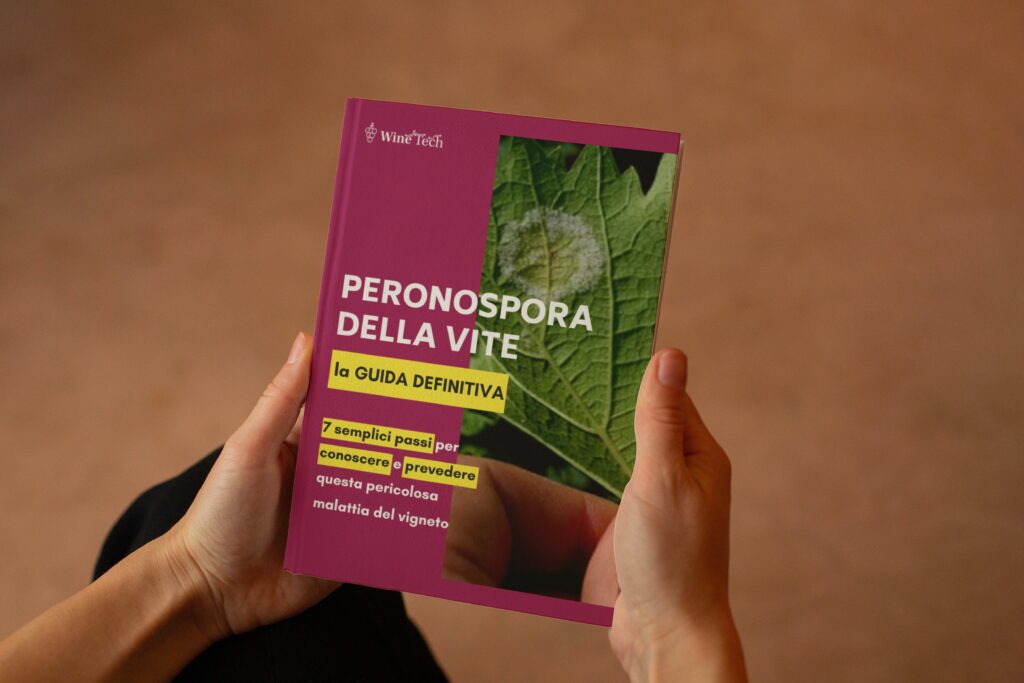
SITEOGRAPHY:
- https://vigneviniequalita.edagricole.it/vigneto/difesa/su-wired-si-parla-delle-cicaline-confuse-nei-vigneti/
- https://www.buongiornonatura.it/sfinge-della-vite-la-falena-in-rosa/
- https://agronotizie.imagelinenetwork.com/difesa-e-diserbo/2020/02/12/popillia-japonica-tra-le-venti-specie-piu-pericolose-d-europa/65792
- https://bugguide.net/node/view/639080
- https://www.noisiamoagricoltura.com/tignoletta-della-vite/
- https://vignetosicuro.it/peronosporazero/

